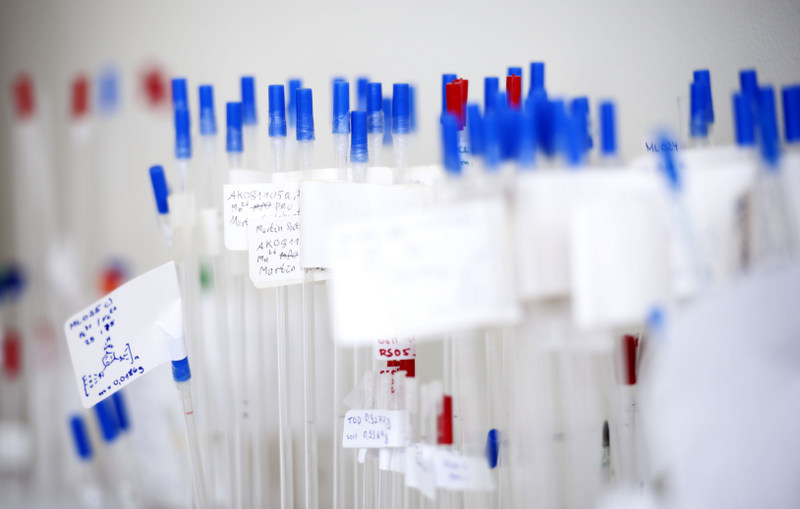
Electron Paramagnetic Resonance Spectroscopy (EPR)
Electron Paramagnetic spectroscopy (EPR) has developed into the major technique for characterization of paramagnetic centers and free radicals. With the advent of site-directed spin-labeling (SDSL) of proteins and DNA or RNA, EPR spectroscopy thus became a valuable technique for obtaining information on structure and dynamics of biomacromolecules. Of particular interest are EPR techniques giving access to broad inter- and intramolecular distance distributions in the nanometer range. Dynamics can be monitored on a scale from pico- to microseconds.
EPR complements X-ray crystallography and NMR spectroscopy, as it can be applied to systems in non-crystalline environments and is not intrinsically limited by size of the biomacromolecule or biomacromolecular complex; furthermore, it can be used to characterize function-related structural changes. Pulsed EPR distance measurements have been combined with SDSL and applied to soluble and membrane proteins as well as oligonucleotides. Such measurements and their use in structural modelling are currently a fast growing field.
Our group actively bridges the traditional fields of method development and application orientation by focusing on model systems that are of current interest in the life sciences, and by adapting techniques to the particular needs for biologiocal applications. This requires open and intense communications between physicochemists and biologists. Please see our recent publications for the key-results of our work.
Methodology
We develop new methods for electron paramagnetic resonance (EPR) spectroscopy in combination with site-directed spin labelling.
We have systematically been working on developing and improving approaches for in-cell EPR and strategies for labelling in vivo. We combine optical and EPR excitation to novel complex experiments opening up possibilities to explore larger and more complex structures at the molecular level, which has hitherto been unachievable.
Material Science
Using sophisticated spectroscopic and imaging tool, we characterize materials on a molecular scale. Examples from the broad range of studies are the investigation of triplet state delocalization in synthetic conjugated polymers or of diffusion of guest molecules in nano-pores via spatially and time-resolved electron paramagnetic resonance spectroscopy (EPR).
Biophysical Chemistry
We investigate structure and dynamics of bio-macromolecules in complex environments, e.g. within organelles or even cells.
Non-invasive molecular spectroscopy to probe protein dynamics and structures at the molecular level is essential for unravelling one of the most challenges in Chemical Biology - the complex physical mechanism of life. Of particular interest are electron paramagnetic resonance (EPR) distance measurements in the nanometer range, especially, when they will be combined with complementary spectroscopic techniques. While current characterization methods for structure and dynamics of proteins are generally applied in vitro, we apply in vivo labelling strategies and in-cell spectroscopy approaches.
In particular, we are interested in Intrinsically disordered proteins (IDPs). IDPs comprise a large fraction of eukaryotic proteins (>30%) and are able to undergo disorder-to-order transitions. Their physiological relevance is becoming increasingly recognized. The IDPs lack a well-defined three dimensional fold and display remarkable conformational flexibility. This property potentially enables them to be promiscuous in their interactions and to adapt their conformation according to the needed function.

